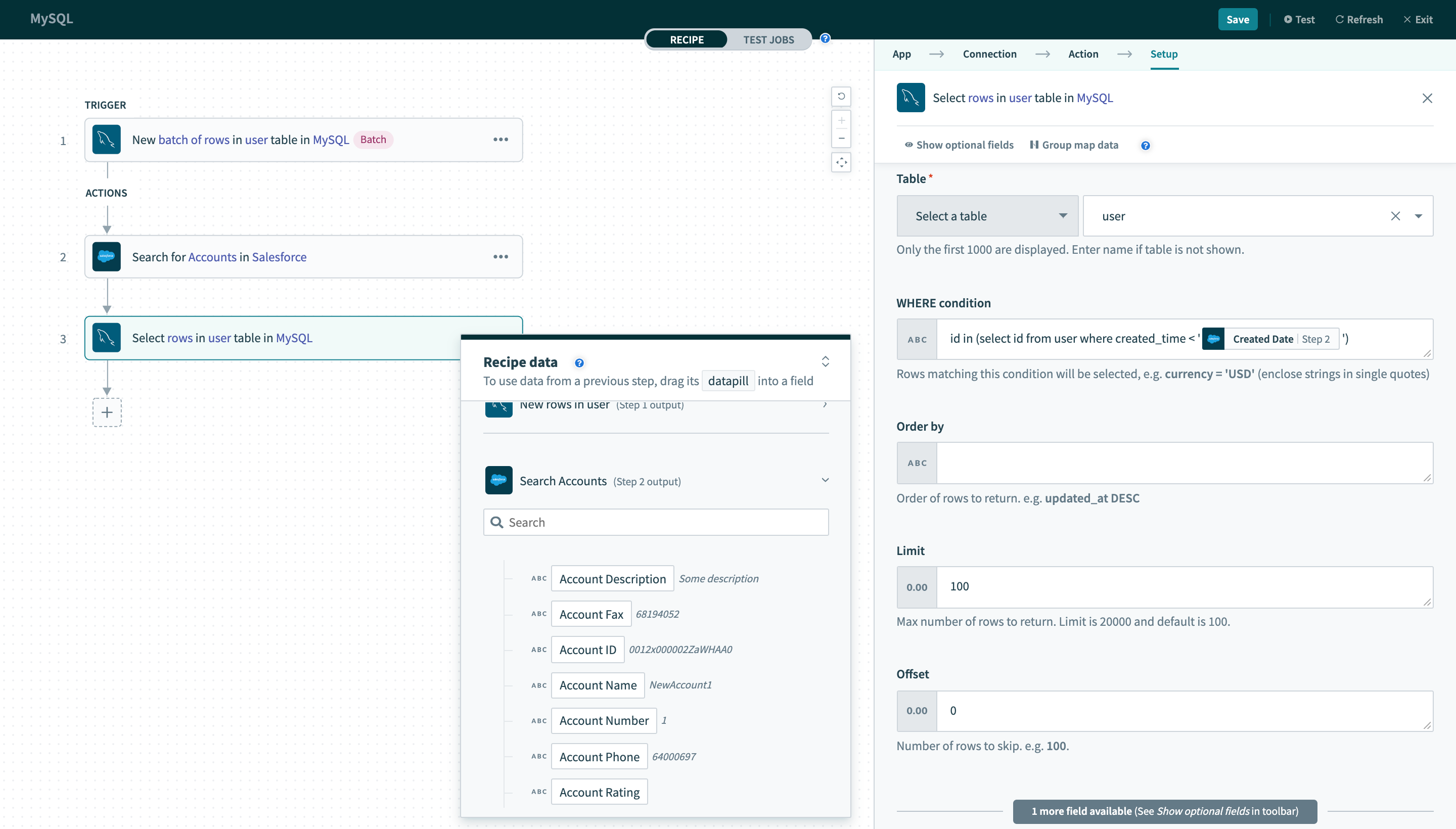# MySQL - Select actions
# Select rows
This action lets you select rows based on certain criteria defined by a WHERE condition. Rows from the selected table that match the WHERE condition will be returned as the output of this action.
 Select rows action
Select rows action
# Table
First, select a table to work with. This can be done either by selecting a table from the pick list, or toggle the input to text mode and type the full table name.
# WHERE condition
Next, provide a WHERE condition to filter rows. This condition can be as simple as filtering a single record by it's ID.
id = 123
Alternatively, it can be used to select multiple rows based on values in one or more columns.
role = 'admin' and title = 'Procurement Analyst'
Complex WHERE conditions with subqueries can also be used. Refer to the WHERE condition guide for more information.
# Parameters
Used in conjunction with your WHERE condition to prevent SQL injection. After declaring named bind variables in your WHERE input, assign values to these variables using this input field. Learn more
# Order by
Rows returned from this action can be ordered based on the Order by input field. This field is used to change the default ordering of rows from your MySQL database.
You can also define the direction of order for each column you wish to order by. The following order by statement will order rows by priority in ascending order followed by created_date in descending order (latest first).
id asc, created_date desc
# Limit
This input field determines the maximum number of rows to return. The default limit is 100 and capped at a maximum of 50000 rows for a single Select rows action.
# Offset
This input field gives you the option to fetch only a page of results from the entire results set. For example, to skip the first 100 rows of the selected results set, input 100 to this field. The default is 0.
Last updated: 5/21/2025, 5:22:32 AM